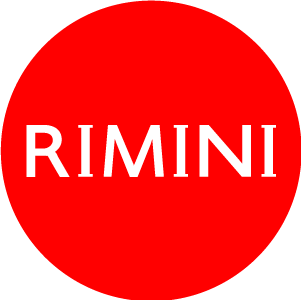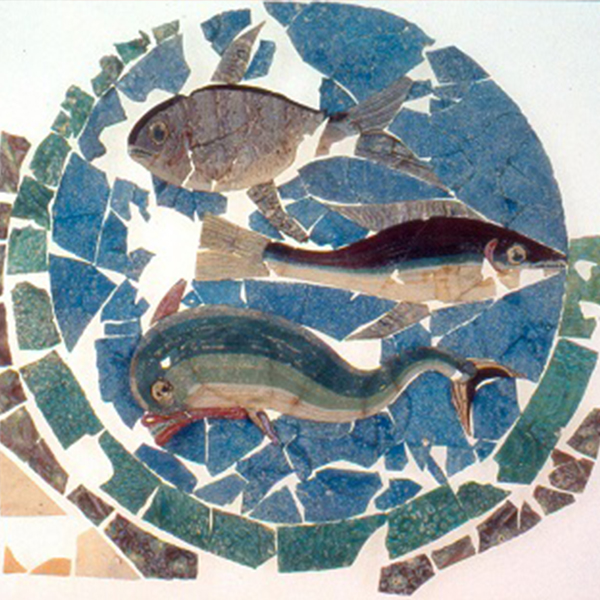
Invitation to the Surgeon’s Domus

7th December 2007: the archaeological site of the Surgeon’s Domus has opened to the public under an enormous crystal glass covering. A little Pompeii in the city centre has come to light after 2000 years.
In 1989, during work on the municipal gardens, a new archaelogical site of extraordinary importance was dicovered togheter with evidences of the Roman time and of the Middle ages.
"The Surgeon’s Domus" was situated in the area close to Ariminum’s city walls, not far from the ancient harbour. It was so called as evidence of the medical profession of the last owner of the house, a doctor of Greek culture.
The domus was destroyed by fire shortly after the mid 3rd century and among the rubble the Domus has revealed structures, mosaics, fittings and furnishings, offering a real picture of Rimini life in the ancient times. These finds include a remarkable collection of surgical and pharmacological items, the richest in the world coming from the past.
Under an enormous crystal covering the Domus is kept and preserved and people can visit it from December 2007. The archeological visit of the site includes a stop at the archeological section of the nearby City Museum (Via Tonini 1), where the exhibition of finds give you an idea of the professional and private life of the time.
OPENING TIME
From 1st September to 31st May
Tuesday to Sunday: 10.00 am - 1 pm and 4 pm - 7 pm
Closed on working Mondays
From 1st June to 31st August
Tuesday to Sunday: 10.00 am - 1 pm and 4 pm - 7 pm
On July and August open every Wednesday and Friday also from 9 pm to 11 pm
Closed on working Mondays
PRICES
full ticket € 7; free admission on the first Sunday of the month
reduced ticket € 5
groups of students € 2
guided visits for groups (min. 25 pax): € 40
On Sundays the Town Museum organizes guided visits to the Domus at 5pm. Booking is required and the participation is subject to availability.
Guided tours are available even on special occasions such as Christmas or Easter time.
For information and booking: tel. 0039.0541.793851; e-mail: musei@comune.rimini.it
The Piazza Ferrari Excavations
The archaeological area in Piazza Ferrari came to light in 1989, during work on the municipal gardens. The chance unearthing of a number of Roman ruins was followed, up to 2006, by systematic excavations. Preliminary probes and stratigraphic excavations have brought to light an area covering a surface measuring more than 700 square metres.
The most interesting remains are of part of a residential block on the northern edge of Roman Ariminum, facing the Adriatic coast, which, at that time, was more than one kilometre further inland than in the present day. The area was flanked by two streets at right angles - a cardo and decumanus - and there was also a later house from the Empire period including the sector now known as the "Surgeon’s House", followed by a building from Late Antiquity.
In addition other finds of archaeological interest were unearthed, i.e. traces of flooring made of crushed potsherd fragments probably dating from a Late Republic period dwelling, as well as evidence of Early Medieval settlement, remains of several buildings from the 16th - 18th centuries, including a number of stone wells and corn silos originally belonging to the churches of San Patrignano and the Religious House of the "Convertite" (a charitable order of nuns looking after penitent prostitutes).
All the uncovered remains, preserved on an on site museum basis, provides the picture of exceptional historical and urban stratification bearing witness to 2,000 years of local history.The Surgeon’s House.
The northern sector of the excavated area contains the remains of the so-called "Surgeon’s House", built during the second half of the 2nd century A.D., incorporating the back peristyle of a previous building, as a two storey residential building.
The small entrance hall, giving onto the nearby cardo, led into a service area followed by an inner corridor, on one side of which there stood a garden, and on the other several rooms with baked clay walls standing on stone bases.
The living quarters, decorated with polychrome frescoes and geometric pattern and figure mosaic flooring included a dining room (triclinium), bedroom (cubiculum) and two reception rooms, the first of which had a fine mosaic with Orpheus surrounded by animals. There were also a number of service rooms towards the back, a heated area (hypocaust), latrine, and a kitchen and pantry on the upper floor.
The whole building was destroyed by fire shortly after the mid 3rd century, probably at the time of raids by Germanic tribes during the reign of the Emperor Gallienus. It was also at this time that the new town wall circuit was built, a short stretch of which can be seen at the back of the house.
The sudden collapse of the walls preserved fittings and furnishings, unearthed among the rubble on the floors of the house. These finds include a remarkable collection of surgical and pharmacological items, evidence of the medical profession of the last owner of the house.Finds from the House
The remains of the "Surgeon’s House" preserved on site are accompanied by the excavated finds on display in the Rimini Archaeological Museum.
Evidence of the quality of the original architectural decoration is thus provided by a selection of polychrome frescoes unearthed from the rubble, including parts of coffer ceilings and walls with floral and animal motif decorated sections, a highlight being the impressionist style view of the harbour.
A decorative feature is the sophisticated glass paste panel imported from the east, originally in the triclinium, showing the sea bottom with three brightly coloured fish.
The garden yielded a large marble basin and the foot of a statue of the Epicurean philosopher Hermarchus, evidence of the intellectual leanings of the house owner.
There are a large number of movable items. Apart from kitchen and tableware and a number of oil lamps, there is an extraordinary collection of medical items consisting of more than 150 surgical instruments, mortars, scales and containers for the preparation and preservation of medicines, as well as a thermos type therapeutical vase made to fit a foot.
On the basis of excavation data it has been possible to provide a detailed, full size reconstruction of the original doctor’s surgery, i.e. a taberna medica domestica,consisting of the room with the Orpheus mosaic and the adjacent cubiculum where the surgeon looked after and operated on his patients. There is also a small hoard of about 80 coins for daily expenses dating from the time when the house was abandoned, i.e. 260 A.D., together with spear and javelin points left on the floors during the violent clashes which will have brought about the destruction of the house.
The Surgeon
The collection of surgical instruments unearthed in the house in Piazza Ferrari leaves us in no doubt about the profession of the owner living there in the mid 3rd century. He was a doctor with considerable experience and skill, who, as was often the case, will have been trained in a Greek environment, arriving in Ariminum from the east.
The eastern origins of the individual in question, also suggested by his adherence to Epicurean philosophical ideals, is clearly proved both by the Greek words he inscribed on two small vases for preserving medicinal herbs, which came to light in the taberna medica and his very name, which was most probably Eutyches, as scratched on the wall by a patient stretched out on the bed in the cubiculum.
The specificity of the surgical instruments unearthed in the house (for example, there were no gynaecological ones), mostly for use in cases of bone traumas and including a very rare iron for extracting arrow heads from bodies, appears to point to specialist experience in a military environment, perhaps in one of the valetudinaria, i.e. Roman army infirmaries on the frontiers of the Empire, the only Roman medical institutions at all similar to a modern hospital.
Evidence of possible army connections is also provided by the bronze votive hand unearthed in the taberna medica, a sign of devotion to Jupiter Dolichenus, who was especially popular among soldiers.
At this point it is also worth recalling the votive inscription discovered some years ago at the forum, where a shrine to Dolichenus had been set up. This inscription, dating from the same period as the Surgeon’s House, refers to a dedication by T. Flavius Galata Eutyches, an individual of eastern origin, who could correspond to the medicus of Piazza Ferrari.
The Palace from Late Antiquity
After the destruction of the Surgeon’s House and building of the new town wall circuit very close to it, the area was completely abandoned. This situation, which was a reflection of a time of crisis in the town’s history, and indeed in that of the Roman Empire itself, only changed towards the early 5th century, when an important historical turning point occurred.
The transfer of the Imperial capital to Ravenna by the Emperor Honorius in 402 led to a partial new lease of life for the towns in the area, new luxurious residences appearing for high court officials. It is from this period that the remains to be seen in the southern part of the excavated area date. They are connected with a palace like structure occupying the front part of the old block opposite the decumanus.
The building, only a part of which has come to light, held a large courtyard with a nymphaeum fountain and canals. Further rebuilding took place around this area between the late 5th and early 6th centuries, under the Gothic Kingdom.
The ruins show a number of rooms, occasionally heated, and connected by an angular corridor. The rooms with brick walls have complex geometric patterned mosaic flooring.
Evidence of the prestige of the late antique residence and high rank of its owner is provided by the cruciform room with hypocaust and the large apsed hall flanking it, certainly used as a reception room by him.
Late Medieval Structures
During the 6th century, at the time of the war between the Goths and Byzantine Greeks, the late antique palace began to show signs of decline, later to be completely destroyed, demolished and buried. Subsequently a small cemetery covered the area, perhaps connected to a religious building nearby, following the Christian custom of burying the dead within the town walls.
As can be seen from a number of tombs on the site, the dead were laid out in simple ditches, occasionally protected by tiles, often covering the mosaic flooring below.
The burial ground was used right into the 7th century, after which the area was occupied by new dwellings. As was customary in the Early Medieval period, the house unearthed was surrounded by open spaces, perhaps used as kitchen gardens, and was built with perishable materials. Walls held up by flimsy foundations consisting of brick fragments, made use of wooden poles and clay fillings, while floors were of beaten earth.
In the south western area of the excavation some of these structures are still to be seen. At floor level, next to a number of pole holes, there is a large hearth with the fire area made of fragments of re-used Roman bricks.
Some modest rebuilding is evidence of the survival of the dwellings up to the 8th century. After this time the area was not built on and covered with layers of farm land, only to be built over again in the Late Middle Ages.

©2016-2023 Assessorato al turismo / Comune di Rimini, Piazzale Fellini 3 47921 - Rimini - +39 0541 704587 / Ufficio Informazioni Turistiche (IAT) +39 0541 53399 / fax +39 0541 56598 / Statistiche web

